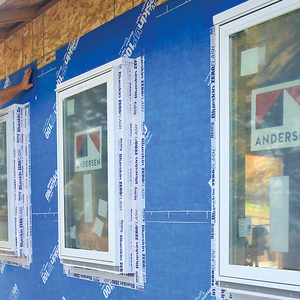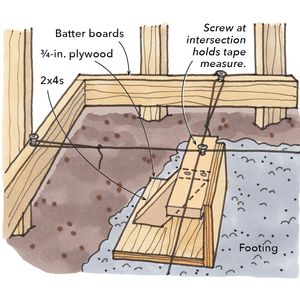to insulate or not to insulate
I have a friend who recently asked whether he should insulate his 70 year old Tudor home roof or not. My immediate answer was yes. But then I started to look at this forum and some of the threads which gave me pause. With all of the talk about moisture, I began to wonder if he should put insulation up there after all. The house is in N. New Jersey and has an attic that is unfinished and unused, other than storage. I can’t imagine that he would not save a large amount with his heating bill if he insulates.
Any thoughts about what he should do. Was my initial reaction correct? Just go get the insulation and put it in? Or is there a bigger picture here? Input is greatly appreciated.
BB



















Replies
Is the attic ventilated?
If so, what kinf of ventilation? (Soffit vents, ridge vents, gable vents, etc.)
Housework probably won't kill you.
But why take a chance?
to my understanding it has a ridge vent
Insulate the attic floor. Before doing so, perform air sealing of all penetrations into the attic (partition plates, electrical boxes, plumbing vents, and attic access hatch).
Hi all,
I've been lurking on this discussion and wanted to ask for some clarification.
Coincidentally, I also live in a 1930 Tudor in Northern NJ with an unfinished walk-up attic and face the same problem. No insulation in either the attic floor or rafters. No attic ventilation either.
I'd like to finish the attic in the future as a guest room and home office. The room won't get much use so I'm considering electric heat rather than even attempt extending my one-pipe steam heat system (even if the boiler could handle it).
Could I insulate both the attic floor and the attic rafters so that I can "keep" my steam heat downstairs when the finished attic is not in use yet still have a warm guest room with the electric heat on? Did that make sense?
For the rafters do I need to cut in a ridge and soffit vents or will dense pack cellulose work?
Thanks in advance,
Jim
I would guess that you would want to insulate the ceiling joists over the entire expanse to keep heat on the lower floor. Your finished room would likely have toe walls, which would be insulated, as would the rafters/ceiling over the finished area. Since the finished room would be insulated below and above, you would be able to keep the heat downstairs when the upper room wasn't being used. I have 6" of insulation under the finished room's floor and 6" in the rafters over the ceiling which matches the 12" in the ceiling joist area of the unfinished attic area. The toes walls are r13 at the moment, but they will get boosted by another layer of r13 perpendicular to the studs. You will be shocked at the difference the added insulation makes. In fact, I suspect your boiler will have significantly less load on it after insulation is added, thus making it available for use in the newly finished area.
My attic is split by the finished room into two sections, each about 11x28 ft with a 5 ft max height at the toe wall. The north side is well ventilated since a furnace sits in it, but the south side gets pretty hot in the summer. I did a quick fix in ventilation by putting soffit vents in down low at each end, and then up high in the middle put in one of those 70 cu ft min bathroom fans which runs off a cord plugged into a timer unit, which I vary according to the season. Total cost was maybe $40 and you can barely see any cosmetic changes to the outside of the house. The fan is vented via 3" AL duct to a vent opening in a soffet in the middle. I was shocked at how much cooler the second floor rooms were in the summer. Prior to the vent, the attic would get up into the low-mid 100's and the bedroom ceilings would literally radiate heat. After venting, the ceilings were barely above ambiant temperature, and this was before the insulation was replaced. We hardly used AC in those rooms after that. In the winter I vent for an hour in the morning and evening, and in the summer from noon until about 8PM. Gets the job done with low cost and low noise. As the roof is fairly new, I didn't want to screw with putting vents in it until I had to do work on it anyway. I would seriously look into both the insulation and venting this summer.
Thanks very much for the reply.
Regarding ventilation - I've heard and read conflicting opinions on insulating the area between attic rafters.
wood's approach using an exhaust fan clearly would help keep the attic and second floor cooler but I guess I'm most concerned about protecting the roof shingles once I get insulation and drywall up.
I've read that most seem to install baffles to keep an airspace under the shingles and also install soffit and ridge vents to promote circulation of air under the sheathing. I've also read that you can dense-pack the whole are and be done with it - no baffles, no vents.
The baffle/vent solution makes the most sense to me but what about all of those shed roofs out there that butt to sidewalls and clearly have no ventilation. They seem to work out OK too - no?